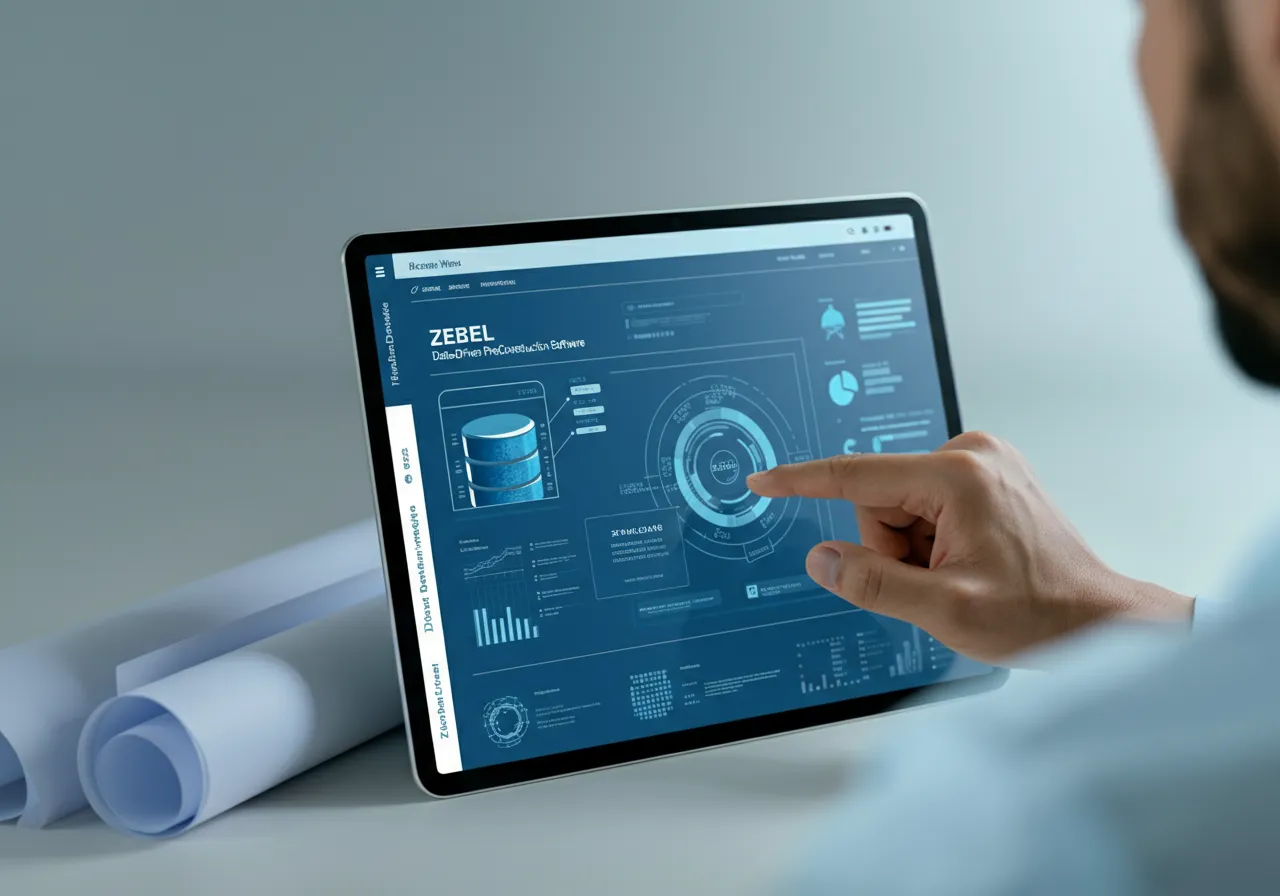Table of Contents
Accurate cost estimating is the backbone of successful construction projects. It sets the stage for effective project planning, reduces risks, and ensures profitability across every phase of a construction endeavor.
With technological advancements, construction estimating software has become a fundamental tool for general contractors, developers, and estimators, simplifying complex workflows into streamlined processes.
This blog explores the top 10 construction estimating software solutions, offering insights into their features, advantages, and how to choose the right tool for your business.
For a more in-depth solution tailored specifically for general contractors, check out Zebel.io’s powerful estimating software, designed to streamline your construction estimating process with advanced features and user-friendly tools. Learn more about how it can benefit your business here: General Contractor Estimating Software.
Why Construction Estimating Tools Are Indispensable
Accurate construction estimates require more than simple calculations—they demand detailed insights into labor, materials, timelines, and unforeseen contingencies. Modern estimating tools provide real-time data, automation, and advanced integrations, enabling those in the construction industry to issue precise bids and stay competitive.
Key Advantages of Construction Cost Estimating Software:
- Efficiency: Automated calculations save countless hours compared to spreadsheets.
- Accuracy: Reduce human error and miscalculations to deliver accurate estimates consistently.
- Integration: Seamlessly connect with project management tools like Procore or construction takeoff software like Planswift.
- Scalability: Handle complex projects with customizable templates and workflows.
- Data Utilization: Leverage historical cost data to refine future estimates and optimize resources.
Essential Features to Look For in Construction Estimating Software
The ideal estimating solution offers diverse functionalities tailored to your unique needs. Here’s what to look for when deciding what is the best construction estimating software:
- Cost Estimation Capabilities: From conceptual estimates to detailed, item-by-item breakdowns, precision is key.
- Automation: Detailed cost analysis with advanced AI-powered solutions.
- Integration: Effortlessly connect with other construction management tools.
- Customizable Templates: Adjust workflows and templates to fit specific project requirements.
- Subcontractor Management: Simplify bid comparisons and subcontractor oversight.
- Cloud-Based Access: Enable real-time collaboration and data availability from any device.
Top 10 Best Construction Estimating Software Solutions
Zebel
Zebel combines expertise and technology to redefine preconstruction workflows. Its standout feature, PreconConcierge™, ensures that all historical cost data is meticulously organized for fast and accurate cost estimation. With unique offerings such as conceptual and detailed estimating, Zebel is an innovative solution designed to enhance efficiency from the start of a project.
Key Features:
- PreconConcierge™ for data organization
- Historical cost database for precise estimates
- Bid management module for subcontractor management
Best For: Mid-to-large construction companies that prioritize speed and accuracy for preconstruction workflows.
Procore
Procore Estimating, previously Esticom, offers a broad range of construction management tools including a built-in takeoff tool. However, its cost-estimating features may lack the capabilities needed for general contractors and developers. Best suited for subcontractors, it integrates with other tools within the Procore ecosystem, but features can feel overwhelming and unfocused for GC and development teams prioritizing accurate preconstruction workflows.
Key Features:
- Cloud-based platform
- Customization within Procore takeoff tools
- Collaboration tools that may require a learning curve
Best For: Subcontractors needing a general-purpose construction management tool but not necessarily tailored for estimation-specific challenges.
STACK
STACK’s interface makes it a decent choice for basic startups, but it may fall short for preconstruction teams needing detailed cost data and customizable workflows. Its reliance on a drag-and-drop system may limit its scalability for mid-to-large projects.
Key Features:
- Simplistic cost estimating without robust automation
- Subcontractor management tools
- Limited flexibility for larger firms
Best For: Smaller teams looking for affordable but less tailored solutions.
Planswift
Planswift stands out as a solid choice for takeoff processes but offers limited functionality for broader estimation tasks. Teams transitioning to fully integrated workflows may find its capabilities constrained and heavily reliant on Excel compatibility.
Key Features:
- Plan-based digital takeoffs
- Dependency on spreadsheets rather than built-in tools
- Minimal support for unique project adjustments
Best For: Teams prioritizing takeoffs over end-to-end estimating workflows.
Sage Estimating
Sage Estimating offers a database-driven approach to creating estimates. However, some users may find the system more rudimentary than other platforms as it lacks parametric estimating capabilities. Customization options are available but can require a steep learning curve, making it best suited for companies willing to invest time and resources into setup processes.
Key Features:
- Database-driven estimation
- Heavy reliance on Sage 300 CRE, narrowing usability
- Customization that requires an initial steep learning curve
Best For: Firms willing to invest time and resources into complex setup processes.
Estimator 360
Estimator 360 caters to smaller teams, but its limited feature set and automation capabilities might fail to meet the demands of growing businesses. It is functional for basic workflows but lacks advanced tools for more refined cost analysis.
Key Features:
- Mobile tools for estimators on-site
- Standardized cost analysis lacking flexibility
- Limited real-time collaboration
Best For: Small construction companies that do not need scalable or highly detailed solutions.
BuildXact
BuildXact performs well for smaller projects but could struggle to meet the demands of teams requiring detailed cost breakdowns or material insights for larger-scale tasks. Its simplicity might appeal to beginners but can hinder growth.
Key Features:
- Basic material cost tracking; lacks advanced analytics
- Simplistic scheduling tools, unsuitable for complex timelines
- Cloud platform without advanced integrations
Best For: Small contractors who favor ease of use over comprehensive functionality.
CostX by RIB
CostX functions well for teams using BIM tools but lacks flexibility for those focused on other workflows. Its advanced takeoff features often require technical expertise, pushing its usability out of reach for many contractors.
Key Features:
- BIM integration
- Excel exports for data manipulation
- Steep learning curve for advanced features
Best For: Experienced developers focused solely on BIM-based projects.
Togal.AI
Togal.AI is an AI-powered preconstruction platform that automates the takeoff process. Its advanced algorithms perform fast and accurate takeoffs, allowing for quick budgeting and real-time project adjustments. While Togal doesn’t offer an estimation workflow solution, an upcoming integration with Zebel will allow for automated estimating in the future.
Key Features:
- AI-driven workflows
- Simple navigation for new users
- Integration options for industry-standard platforms
Best For: Construction companies looking for a faster and more accurate takeoff process.
BuildingConnected
BuildingConnected aids in managing subcontractor bids, but it offers minimal focus on estimation tools, leaving much to be desired for cost management workflows. It succeeds in simplifying bids but misses critical project-cost functionality.
Key Features:
- Subcontractor-focused tools
- Bid tracking lacking advanced analytics
- Integration with other software like Procore
Best For: Contractors focused more on subcontractor management than cost-estimating workflows.
Pricing Comparison
| Software | Starting Price | Key Features |
| Zebel | Contact for pricing | PreconConcierge™, historical cost database, upcoming bid management module |
| Procore | Contact for pricing | Cloud-based platform, built-in takeoff tools, collaboration tools |
| STACK | $2,999/year | Drag-and-drop estimating, subcontractor management integration, scalable integration |
| Planswift | $2,000/year (subscription) | Plan-based takeoffs, spreadsheet integration, customizable templates |
| Sage Estimating | Contact for pricing | Database-driven cost estimation, integration with Sage 300 CRE, customizable templates |
| Estimator 360 | From $250/month | Mobile-friendly design, automated cost analysis, real-time collaboration |
| BuildXact | From $133/month | Material cost tracking, supplier integration, automated quotes and schedules |
| CostX by RIB | Contact for pricing | BIM integration, advanced quantity takeoffs, Excel export |
| Togal.AI | From $299/month | AI-driven workflows, simple navigation, detailed plan analysis |
| BuildingConnected | Contact for pricing | Subcontractor tools, bid tracking, Procore integration |
Cloud-Based vs. On-Premise Solutions
Deciding whether to go cloud-based or select an on-premise solution depends on your company’s needs.
Cloud-Based Benefits:
- Real-time collaboration
- Accessible from any device
- Requires less IT infrastructure
On-Premise Advantages:
- Greater control over security
- Suitable for companies with restricted data-sharing policies
How to Choose the Best Construction Estimating Software
When selecting an estimating solution, use this checklist to guide your decision:
- Does it provide necessary features like cost estimating and subcontractor management?
- Is it compatible with tools your team already uses, like Procore or Excel?
- Does it support both conceptual and detailed estimating?
- How customizable are templates and workflows?
- Can it integrate with BIM or other 3D modeling tools?
Empower Your Projects With the Zebel
Zebel’s estimating solutions address several common pain points that others fail to resolve. Construction professionals benefit from Zebel’s meticulously organized historical cost database, delivering unparalleled accuracy and speed in their estimates.
Unlike other tools that require extensive customization or external integrations, Zebel centralizes key features into an intuitive platform. Its unique approach to detailed and conceptual estimating ensures that all preconstruction efforts are seamless, efficient, and tailored to the complexities of project workflows.
Selecting the best construction estimating software is crucial to achieving efficiency and profitability. Don’t tie yourself down with outdated spreadsheets—embrace platforms that streamline your workflows and provide accurate estimates.
If you’re still unsure where to begin, give Zebel a try. Streamline your estimating process, leverage historical cost data, and take your preconstruction workflows to the next level.
Frequently Asked Questions
What estimating method is most popular?
The unit cost estimating method is one of the most popular, as it breaks down costs into manageable units, providing a high level of accuracy and simplicity for both small and large projects. This approach is widely used due to its versatility and ease of integration with modern estimating tools.
What are the two dangers that must be avoided when using computerized estimating?
Two key dangers to avoid when using computerized estimating are over-reliance on software-generated figures without proper validation and failure to account for unique project variables that may not be reflected in standard data libraries. These can lead to inaccuracies and unexpected costs.
What is the best free app to make construction estimates?
There are several free apps available for construction estimates, but Joist is often recommended due to its user-friendly features for creating professional estimates and invoices. It is ideal for small contractors and construction professionals looking to manage their estimates on-the-go.







